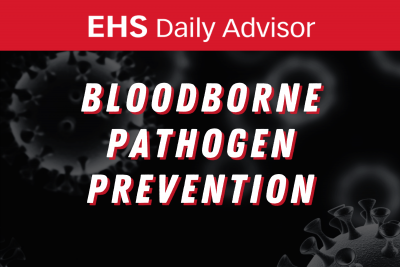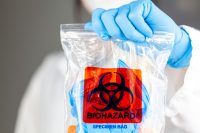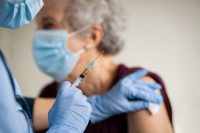On November 28, the Quality, Safety & Oversight Group of the Centers for Medicare and Medicaid Services (CMS) urged healthcare industry leaders to take steps to protect healthcare workers from workplace violence. Recommended steps to prevent workplace violence in hospitals include ensuring workers receive adequate training, having sufficient staffing levels, providing ongoing assessment of patients […]
Bloodborne pathogens are a dangerous hazard that can affect employees in many different kinds of work environments. According to OSHA, the CDC estimates that 5.6 million healthcare workers and employees in related fields are at risk of exposure to bloodborne pathogens through occupational exposure to blood or other potentially infectious materials (OPIM). Here’s what you […]
In our latest installment of Ask the Expert, brought to you by the team of industry experts at EHS Hero®, we look at a recent question from a subscriber asking about the OSHA standards of biohazard labeling in facilities where biohazardous samples are kept. See what the experts had to say. Q: We store biohazardous […]
Back to Basics is a weekly feature that highlights important but possibly overlooked information that any EHS professional should know. This week, we celebrate EHS Compliance Week by examining the dangers of bloodborne pathogens and how employers can help prevent their transmission in the workplace. Bloodborne pathogens are a dangerous hazard that can affect employees […]
The ramping up of vaccination for COVID-19 comes with rising concerns about bloodborne pathogen (BBP) exposure for vaccinators and the need for personal protective equipment (PPE), as well as steps to prevent needlestick injuries and other BBP program requirements.
Take this quiz to learn more about lab safety from Bulwark CP, your ultimate lab safety solution.
In February 2019, the EPA issued a final rule establishing a new set of regulations for the management of hazardous waste pharmaceuticals generated by healthcare facilities. There were several rationales behind the rule. For example, in contrast to staff at industrial facilities, healthcare personnel (e.g., doctors and nurses) are rarely trained to make hazardous waste […]
The EPA has long emphasized that the Resource Conservation and Recovery Act (RCRA) and its regulations were written to address the generation of solid and hazardous wastes by industrial plants and the storage, treatment, and disposal of such wastes at permitted facilities and landfills. What the regulations were not intended to cover is the generation […]
Female nurses who give cancer patients their medications don’t always wear gloves or gowns to protect themselves from hazardous drugs, according to a new National Institute for Occupational Safety and Health (NIOSH) study.
An American Society of Clinical Oncology (ASCO) panel began work on developing standards for the safe handling of hazardous drugs. The expert panel endorsed three sets of existing guidelines and standards. However, it also identified issues it felt existing standards did not adequately address.









